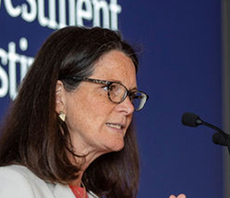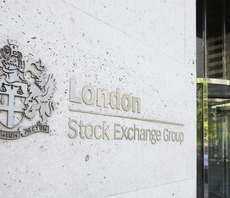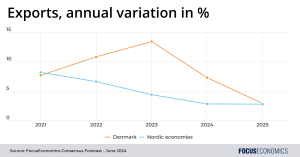Ahead of Friday’s payrolls data for May the crowd was newly confident, again, that the Fed would soon start cutting interest rates. Treasury yields were sliding and expectations were rising that policy easing was near. But the May jobs report flipped the script with news of stronger-than-expected hiring.
Nonfarm payrolls rose 272,000 in May, rebounding sharply from April’s gain with a gain that was well above the consensus forecast. The week-long drop in Treasury yields reversed and the game of forecasting the Fed’s next move was once more back in play.
The news certainly complicates the outlook for this week’s Federal Reserve policy announcement on Wednesday, June 12. Although the market has long expected no change in policy for this meeting, the payrolls data has refocused attention on the central bank’s revised economic projections that will be released on Wednesday. Meanwhile, Fed Chairman Jerome Powell’s press conference will take on new import as markets digest the latest sign of labor market resilience.
The Fed funds futures market this morning is pricing in modest odds that the first rate cut will now arrive at the November 7 FOMC meeting. A September rate cut, which was considered moderately likely before Friday’s jobs data, is now estimated as a coin flip.
The policy-sensitive 2-year Treasury yield continues to trade well below the current Fed funds rate, but the market in recent weeks has pared the spread. In other words, this key Treasury yield is also pricing in lower odds that a rate cut is near relative to recent history.
A simple model for estimating the current state of monetary policy suggests that a moderately hawkish bias still prevails. The implication: policy is still putting downside pressure on inflation.
The joker in the deck is Wednesday’s consumer price data for May, which will be published several hours ahead of the Fed’s announcement that day. Economists are expecting inflation’s pace will remain comparable to April’s rise. Sticky inflation, in sum, is still the crowd’s outlook. That leaves the burning question: How will the Fed react?






